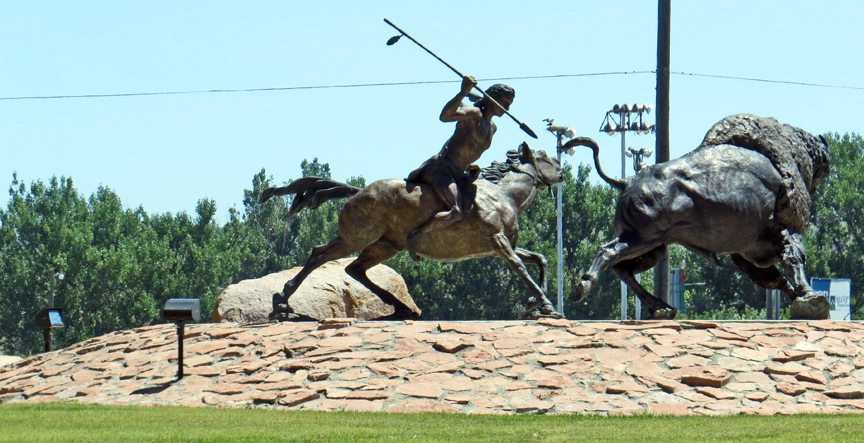

Fort Caspar

Fort Caspar
Fort Caspar was a military post of the United States Army in present-day Wyoming, named after 2nd Lieutenant Caspar Collins, a U.S. Army officer who was killed in the 1865 Battle of the Platte Bridge Station against the Lakota and Cheyenne. Originally founded in 1859 along the banks of the North Platte River as a trading post and toll bridge on the Oregon Trail, the post was later taken over by the Army and named Platte Bridge Station to protect emigrants and the telegraph line against raids from Lakota and Cheyenne in the ongoing wars between those nations and the United States. The site of the fort, near the intersection of 13th Street and Wyoming Boulevard in Casper, Wyoming, is listed in the National Register of Historic Places and is now owned and operated by the City of Casper as the Fort Caspar Museum and Historic Site.
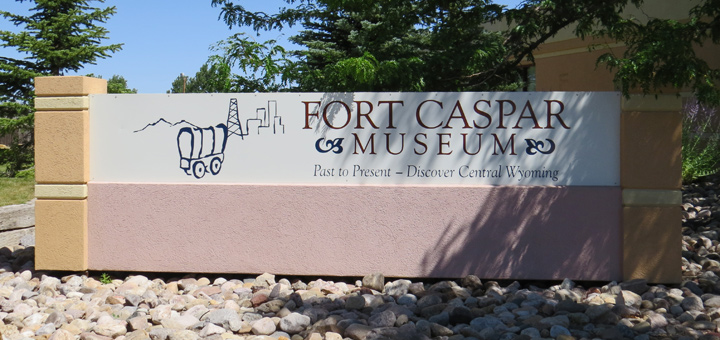
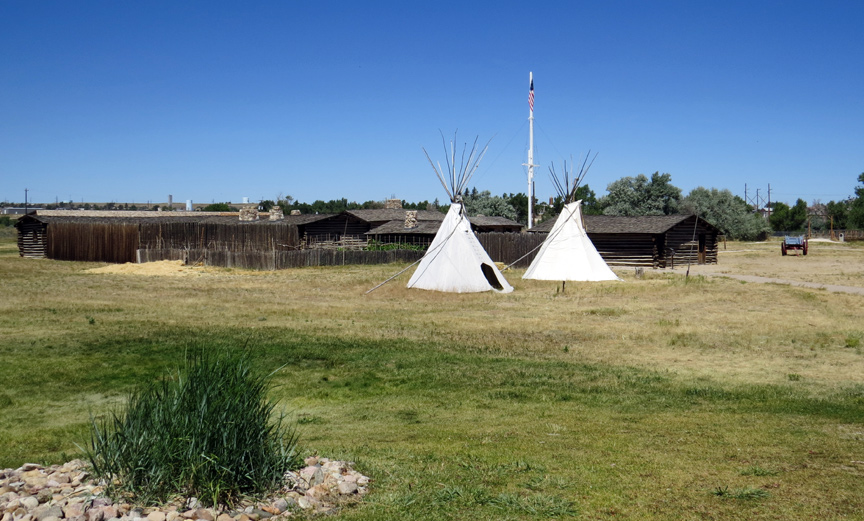
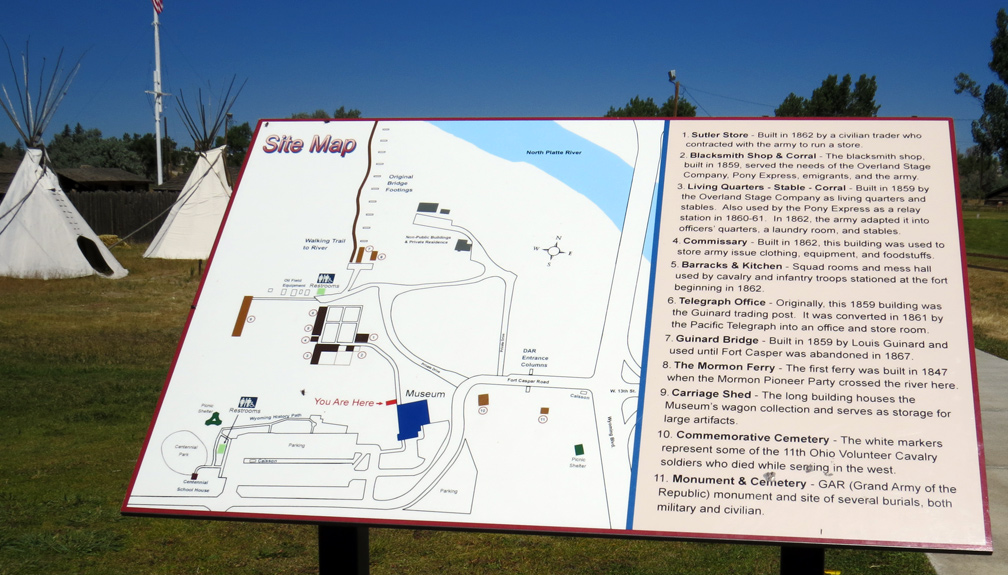
The area where Platte Bridge Station was located had been the site of various
temporary Army encampments over a period of years before the establishment of
the fort, or "station" itself. The fort was located on the south side of the
North Platte, near the western edge of present-day Casper, at one several local
points where the Emigrant Trail crossed from the south side to the north side of
the river. In 1847, during the first Mormon wagon train to present-day Utah,
Brigham Young commissioned a ferry at the site for later emigrants. The ferry
consisted of cottonwood dugout canoes and planking for a deck, with two oars and
a rudder. On June 19, Young named nine men to remain to operate the ferry while
the remainder of the party continued the journey westward. A group of Mormons
returned to the site each summer between 1847 and 1852 to operate the ferry. The
ferry was moved to a different spot on the North Platte in North Casper in 1849.
It was eventually replaced with a rope-and-pulley system that could make the
crossing in five minutes.
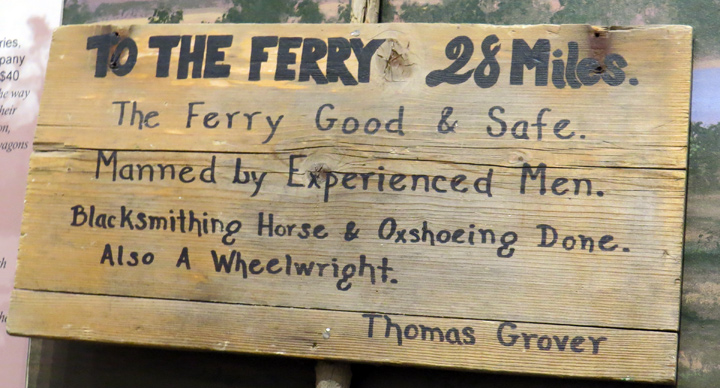
In following years, trader John Baptiste Richard established a trading post
several miles downriver of the crossing. The U.S. Army established its first
presence in the area in 1855, erecting Fort Clay near Richard's trading post. In
1859, when the site was part of the Nebraska Territory, Louis Guinard built a
competing bridge at the trading post, called the Platte Bridge Station, at the
site of the old Mormon Ferry crossing. From 1860–1861, the Pony Express operated
a station at the site.
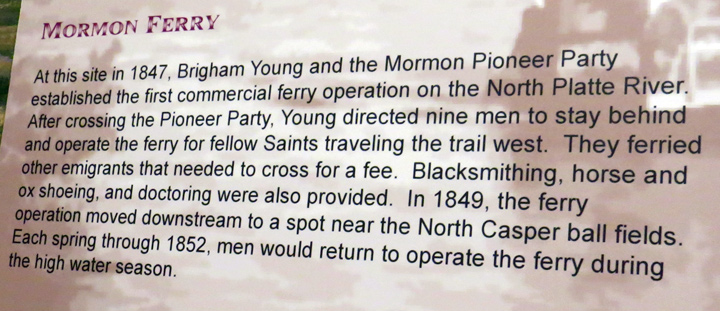
By the middle 1860s, the increasing presence of emigrants and other white settlers in the region began to cause friction with the Lakota and Cheyenne. In response, and partly to protect the new telegraph line, the Army began increasing its presence in the region in 1861 by sending a detachment to guard Guinard's bridge. Many of these troops, who created a series of "stations" along the Oregon trail, were from various state units raised during the Civil War. In 1862 the Army purchased the Guinard's Platte Bridge station.
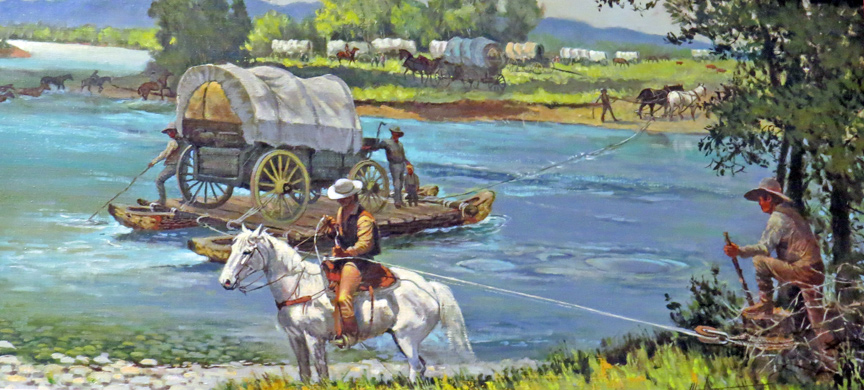
In July 1865, accompanied by survivors of the Sand Creek Massacre which occurred
the previous November as part of the Colorado War, a party of several thousand
Cheyenne and Sioux approached Platte Bridge Station from the north intending to
attack the soldiers camped there and destroy the 1,000-foot long bridge. They
had previously scouted the area and selected it because the soldiers there were
not in the small trading post stockade of 14-foot pine logs but camped in tents.
Initially only a small party of Indians showed themselves to the troops, the
remainder of the Indians remaining concealed. By the afternoon of July 25,
however, when a large raiding party had driven off a number of horses and forced
the pursuing cavalry troopers to expend much ammunition, the station had
permanent structures and a mountain howitzer of the 11th Ohio Cavalry covered
the approaches to the bridge.

Late that night a detachment of 14 men of Company I, 3rd U.S. Volunteer Infantry
led by Capt. Adam Smith Leib, escorted by 1st Lt. Henry C. Bretney and six (some
accounts say 10) troopers of Company G, 11th Ohio Volunteer Cavalry, arrived
from Sweetwater Station en route to Fort Laramie for supplies and a long-overdue
payroll. They found the station on 50% guard duty and molding bullets. Leib
advised the station commander, Major Martin Anderson of the 11th Kansas Cavalry,
that he had earlier passed a small train of five empty mule-drawn wagons
returning from Sweetwater to Laramie, 14 teamsters escorted by 11 enlisted men
of the 11th Kansas. Knowing that the train was due to come in the next morning,
the officers at the post discussed sending out a relief force to drive off the
Cheyenne and Lakota warriors, so that the wagon train could come safely in. Leib
and Bretney suggested an immediate march but Anderson decided to wait for
daylight. Bretney, who had succeeded to command of Company G on February 13 when
its captain, Levi M. Rinehart, had been accidentally killed by a drunken trooper
during a skirmish, was not on good terms with Anderson. On his arrival at Platte
Bridge on July 16, the Kansan had replaced Bretney as post commander and ordered
Company G to relocate to Sweetwater Station, escorting the same wagon train now
returning from there. In addition, the 11th Kansas Cavalry was due to march
to Fort Kearney on or about August 1 to muster out of service.
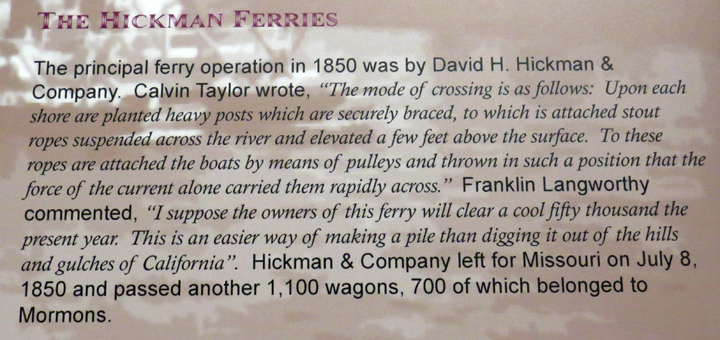
After reveille, all four of Anderson's officers declined to lead the relief
force and some placed themselves on the sick list to avoid the duty. 20-year-old
2nd Lt. Caspar W. Collins of Company G 11th Ohio Volunteer Cavalry, en route
back to his company farther west from a remount detail at Fort Laramie, had
arrived the afternoon before with the mail ambulance and was ordered by Anderson
to lead the relief. Bretney had no authority to countermand the order but
advised Collins to refuse it. Instead Collins borrowed Bretney's pistols and was
given a mount from the regimental band. Among those leading the Indian warriors
were Red Cloud and the famed warrior Roman Nose. George Bent, the half Cheyenne
son of William Bent who survived the Sand Creek Massacre, participated in the
battle as a Cheyenne warrior, and later wrote about it in his letters.
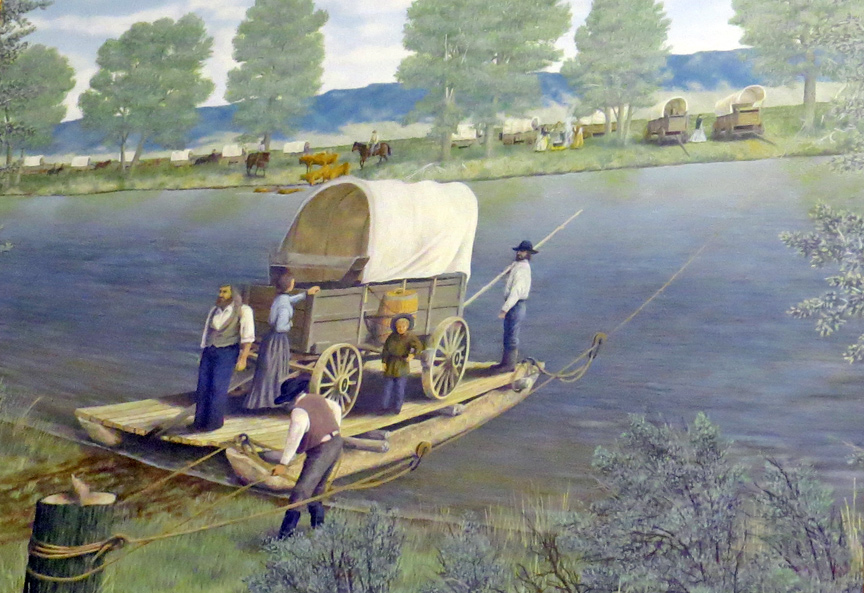
At dawn numerous Indians were observed by sentinels on the surrounding hills observing the station. At 7:00 a.m. a larger force forded the river east of the station and rode just out of rifle range, taunting the garrison. Collins and a small detachment of 25 men of the 11th Kansas crossed the Platte Bridge at a walk, then formed into a column of fours and rode west along the north bank at a trot to drive off any hostile Indians. Behind him, the contingent of the 3rd U.S.V.I. and its 11th Ohio Volunteer Cavalry escort crossed the bridge on foot as a support force for Collins, forming a skirmish line when they observed several hundred Cheyenne emerge from the sand hills and gulleys between themselves and Collins.

The Indians had concealed large bands of warriors near the bridge and over the
crest of the hills, possibly as many as a thousand Lakota, Cheyenne and Arapaho.
Collins wheeled his detachment into two lines and charged the first group to
emerge, only to find himself heavily outnumbered. He then ordered a retreat to
the bridge through the Cheyenne to his rear as yet another force, this of
Lakota, attempted to rush the bridge. The skirmish line at the bridge held the
Lakota at bay with volley fire until 20 of the 26 troopers, all wounded to some
extent, fought their way through. Five were killed, including Collins, who was
wounded in the hip and shot in the forehead with an arrow while trying to aid a
wounded soldier. The battle lasted only a few minutes, with Bent claiming that
the Lakota and Cheyenne suffered only a few casualties.
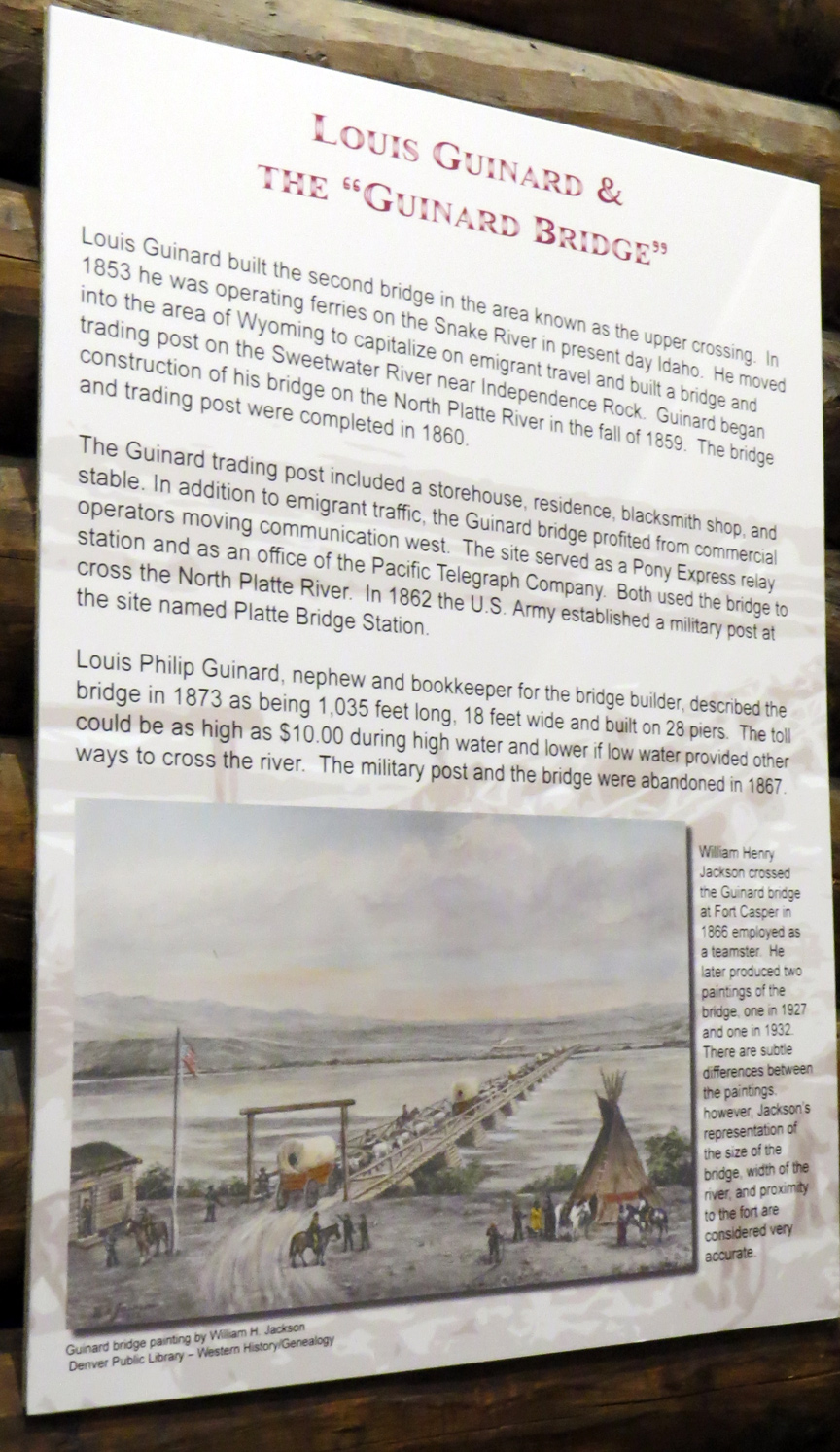
Bretney in a rage returned to the stockade and accused the Kansas officers of
cowardice when Anderson refused to allow a larger force and the howitzer to
attempt another relief. Anderson placed Bretney under arrest and turned over the
post's defenses to Leib, who had the garrison throw up an embrasure and dig
rifle pits to protect the howitzer at the south end of the bridge. During the
morning the attacking force destroyed a thousand feet of telegraph wire on the
line to Fort Laramie before Anderson thought to request reinforcements, then
drove off the detail sent to repair it, killing another trooper.
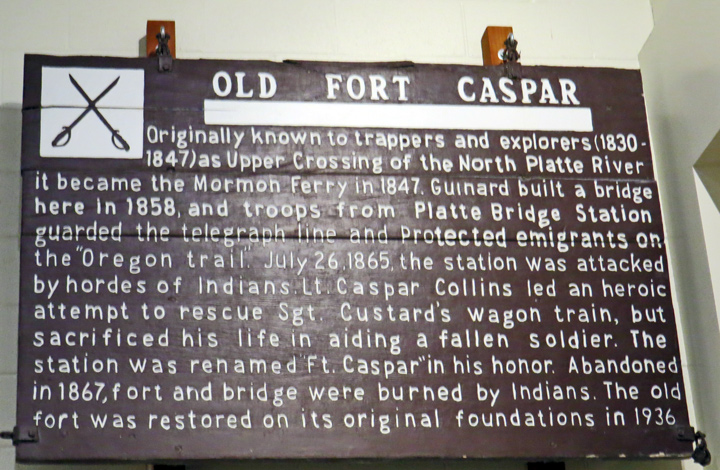
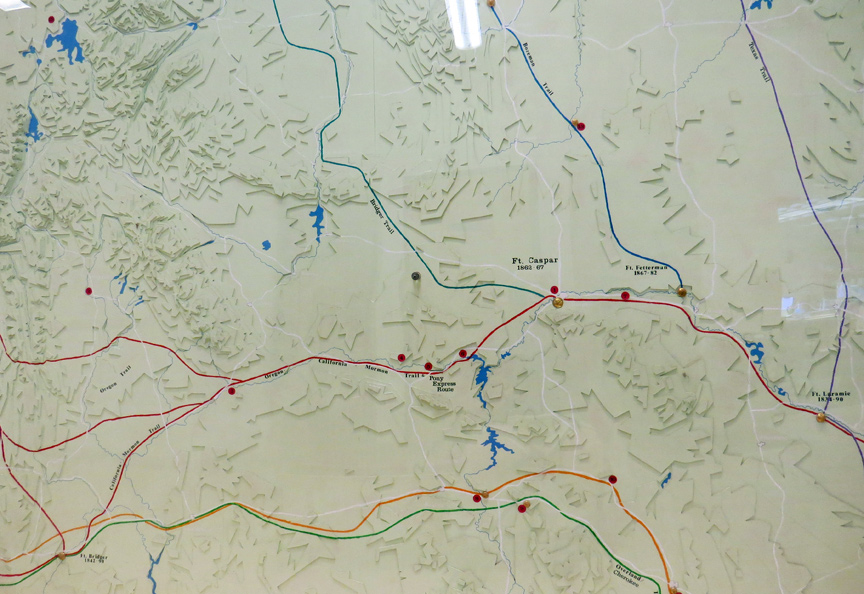
location of forts
The wagon train, commanded by Sergeant Amos J. Custard, was attacked approximately five miles to the west, within sight of the station, at around 11:00 a.m. According to the Indians the battle lasted about half an hour with one person escaping, a teamster, 22 troopers killed along with 8 Indian warriors. Many Indian warriors were wounded. The Indians, as was their custom, took no prisoners. However Army accounts state that the wagons were forced into a hollow where they held out for four hours, using fire from Spencer rifles to repel assaults until a large group closed on foot and overwhelmed the defenders, killing all. The wagons were burned at approximately 3:00 p.m. Corporal James A. Shrader and four troopers, sent as scouts by Custard to investigate the sound of the howitzer firing, were cut off and pursued by a hundred Cheyenne led by the brother of Roman Nose, Left Hand, who was killed in the running fight. Eventually Shrader and two men made their way on foot into the station. Two Shoshone scouts were paid to take a message requesting reinforcements to the next telegraph station east, but the attacking force broke up before relief arrived.
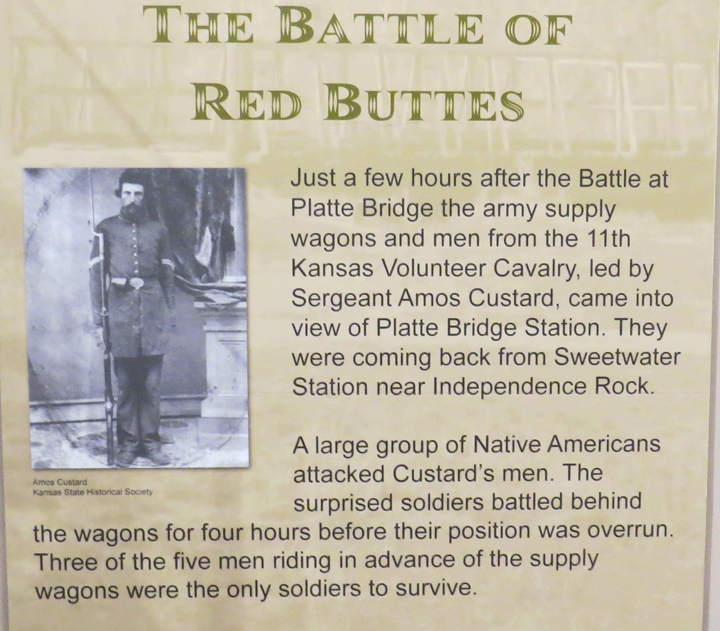
The battle became known as the Battle of Platte Bridge Station. The battle of
the wagon train also became known as the Battle of Red Buttes, although that
location was ten miles further to the west. Army fatalities in both actions
numbered 27 men of the 11th Kansas Cavalry and Lt. Collins, with at least ten
seriously wounded. Historian Robert Utley placed combined Indian casualties in
all the July forays around Platte Bridge Station as 60 killed and 130 wounded.
The Army officially renamed the post Fort Caspar to honor Collins, using his
given name to differentiate the post from an existing fort in Colorado named
after Collins' father.

The fort was abandoned two years later in August 1867, with the garrison moved
to Fort Fetterman at Douglas, Wyoming.
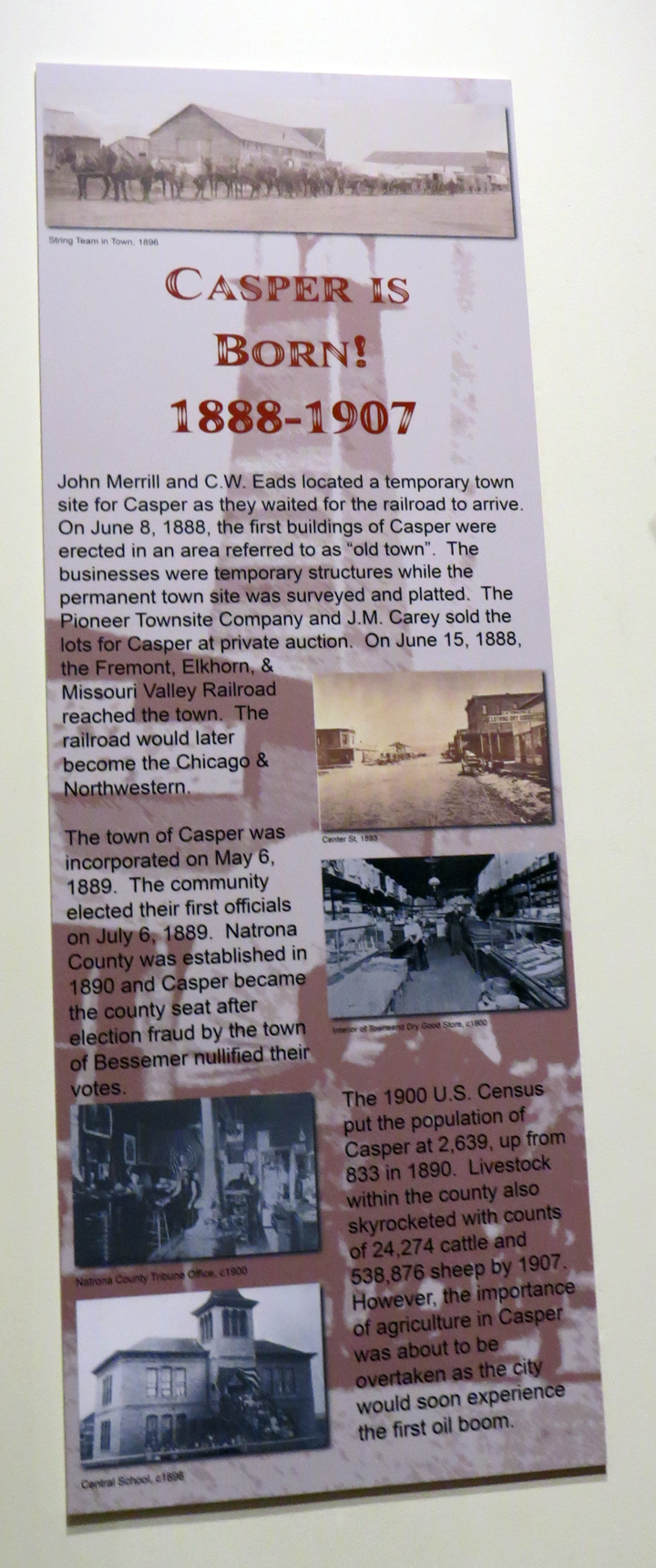
Fort Caspar was partially reconstructed in 1936 using sketches made by
Lieutenant Collins in 1863. The fort itself underwent a lot of changes during
its occupation, and the current recreation reflects the post in 1863-1865. The
City of Casper now operates a museum at the site, which features reconstructed
log buildings, including a wooden stockade. The site also includes a replica of
the Mormon ferry that was operated there between 1847 and 1849, as well as a
model of part of the bridge that later replaced the ferry. In early December
members of a living history group portraying a company of the 3rd US Infantry
host a historical reenactment at the site.
Text from Wikipedia
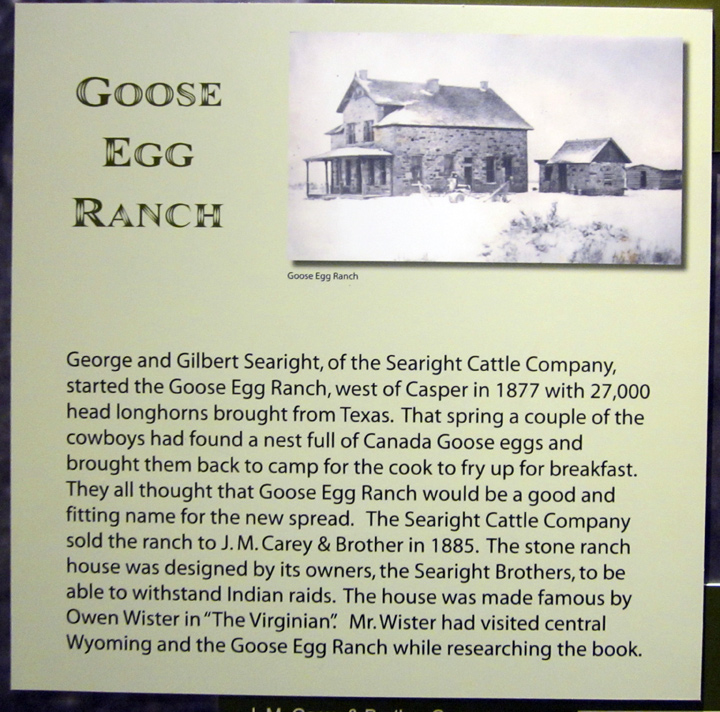
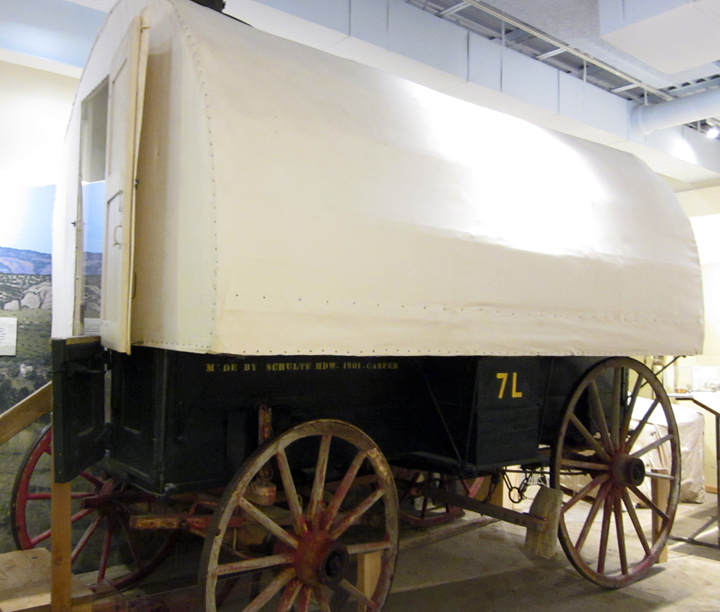
sheepwagon
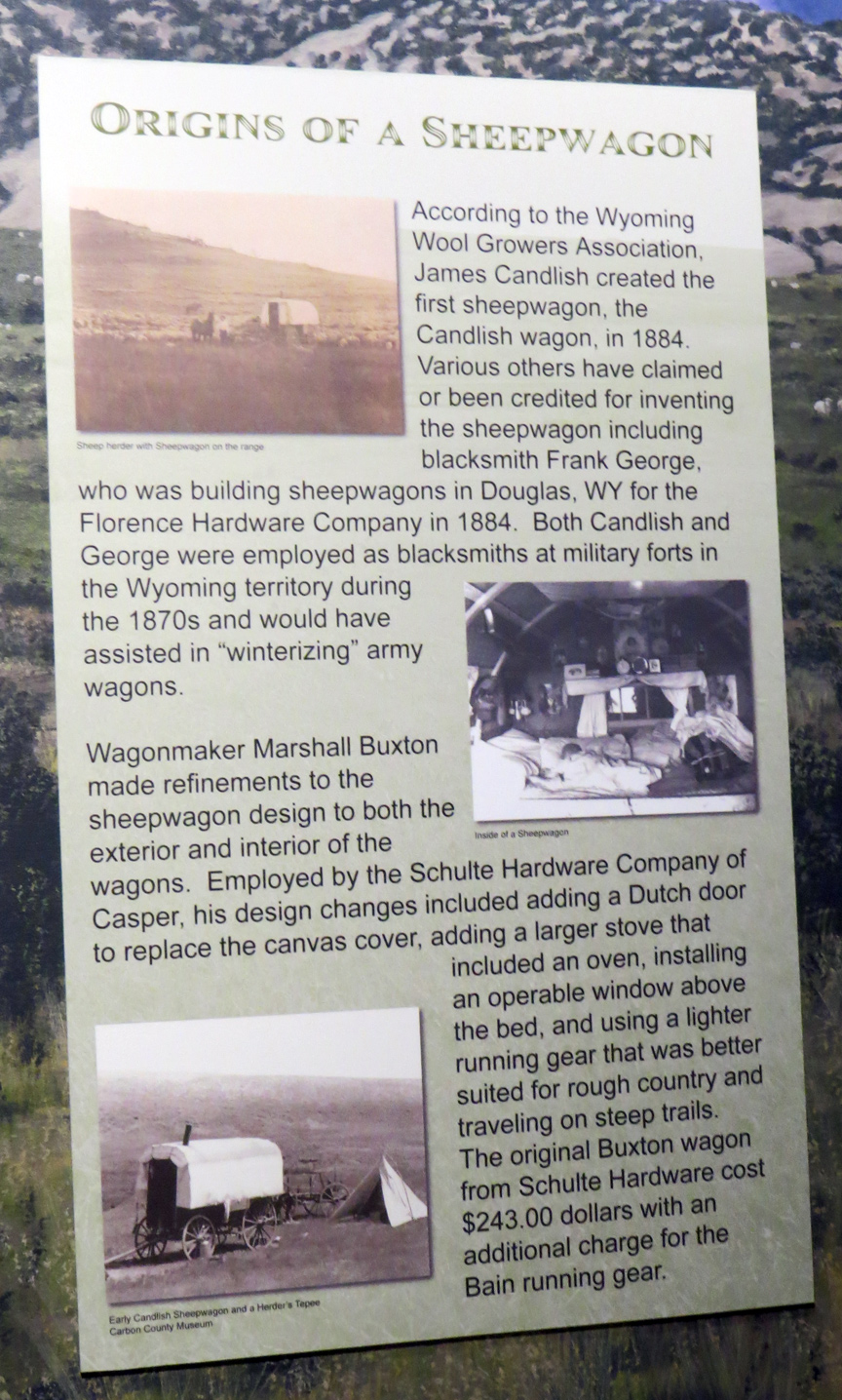

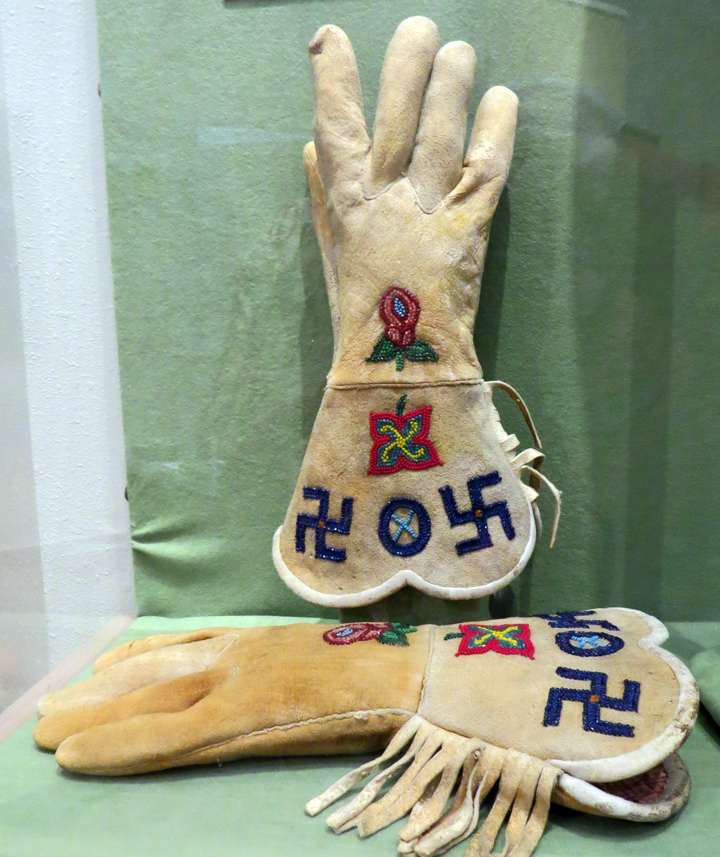
Native American gloves
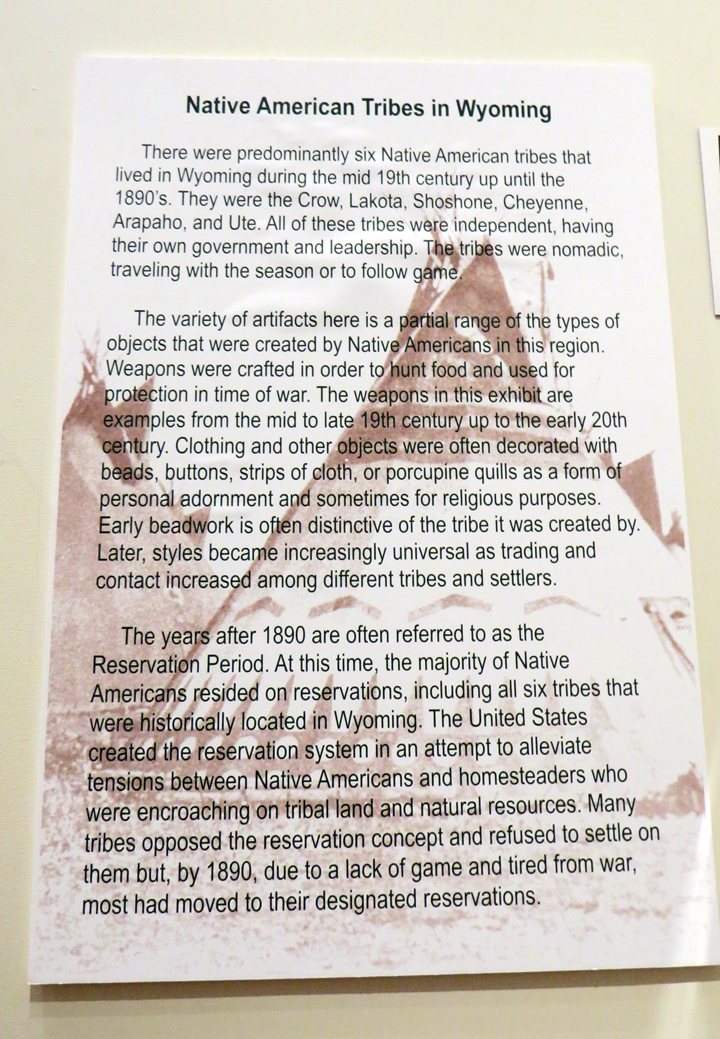
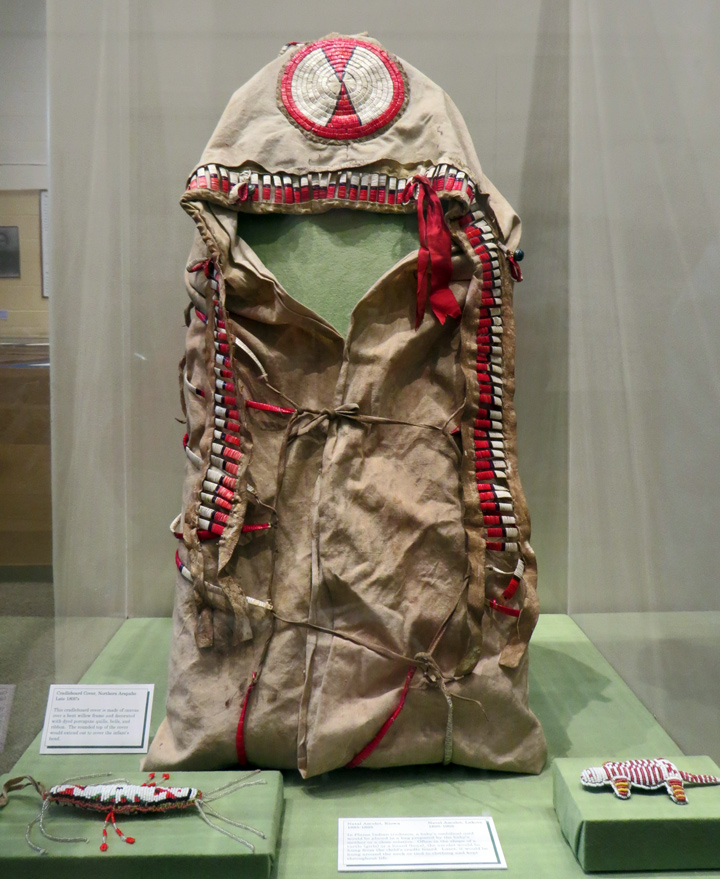
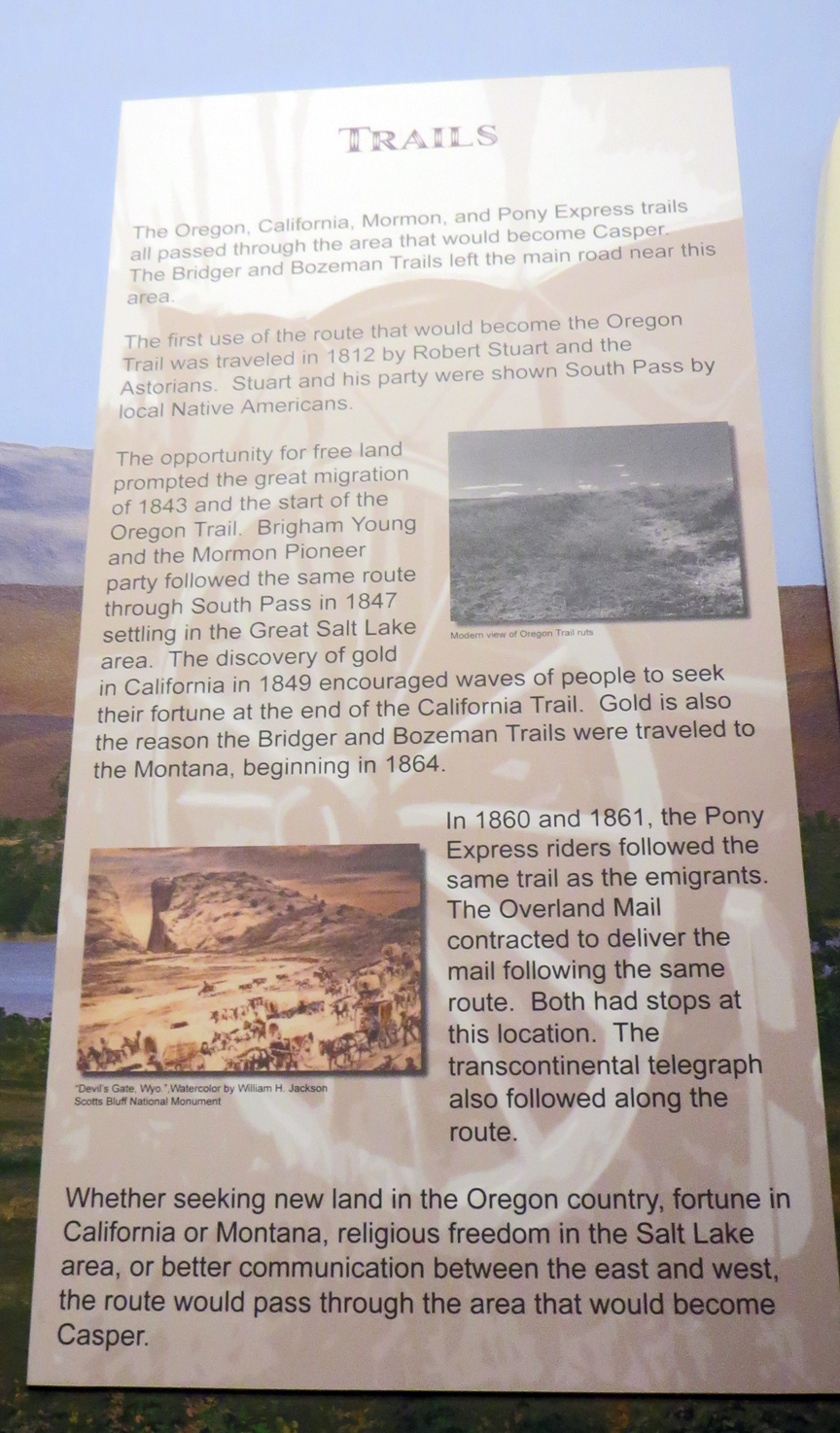
trails
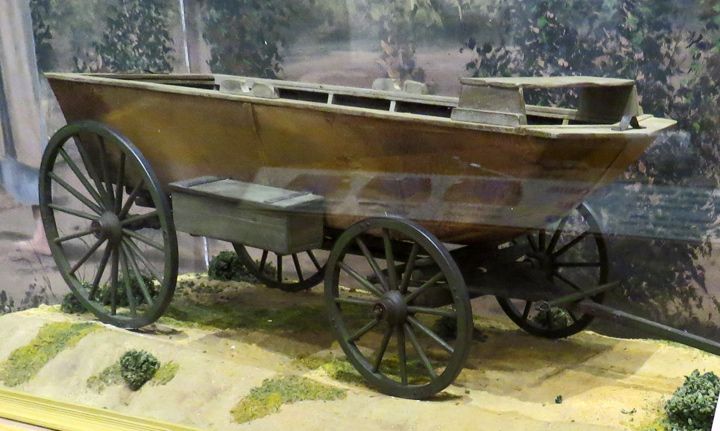
Revenue Cutter
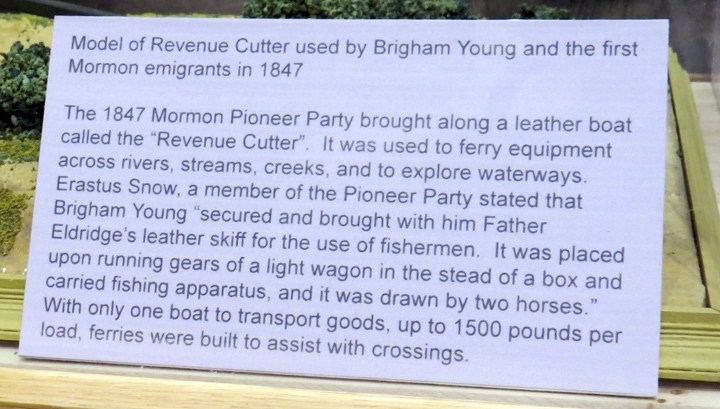
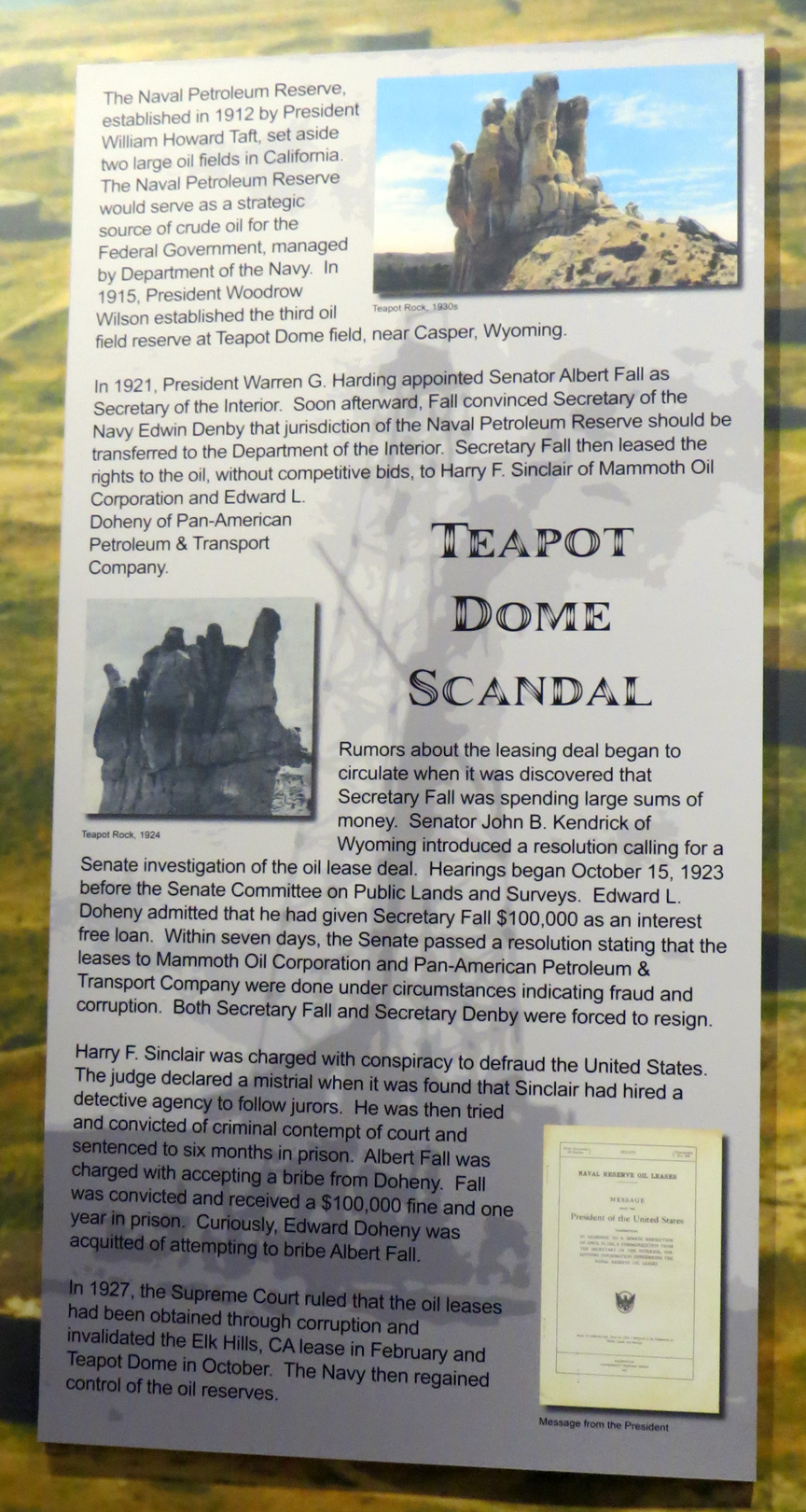
Teapot Dome
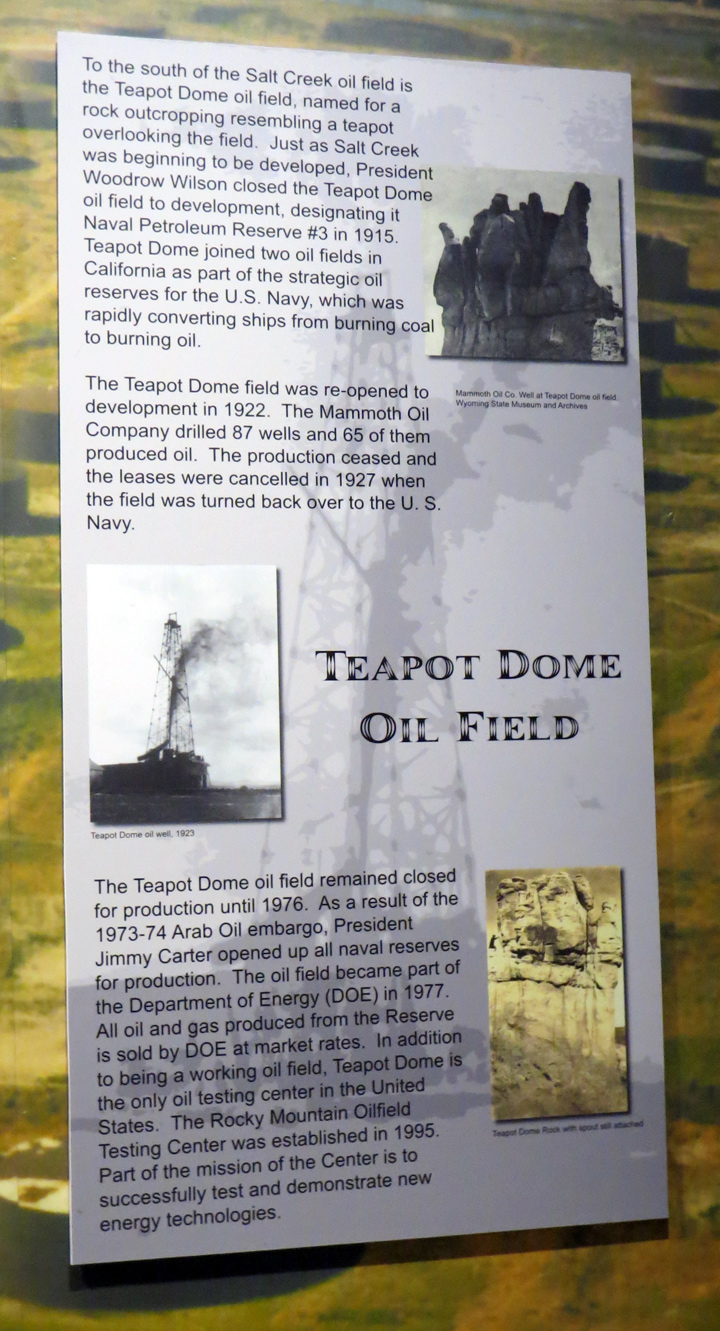
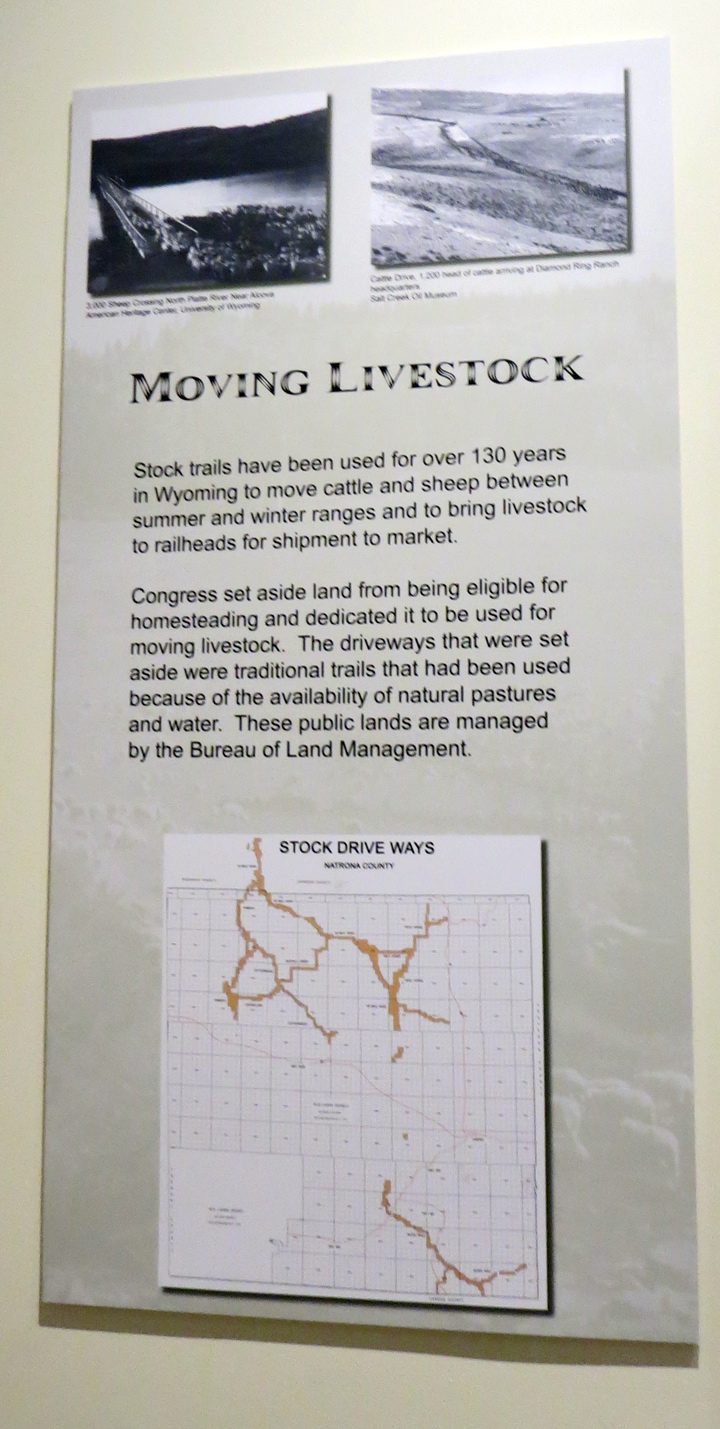
stock drives
